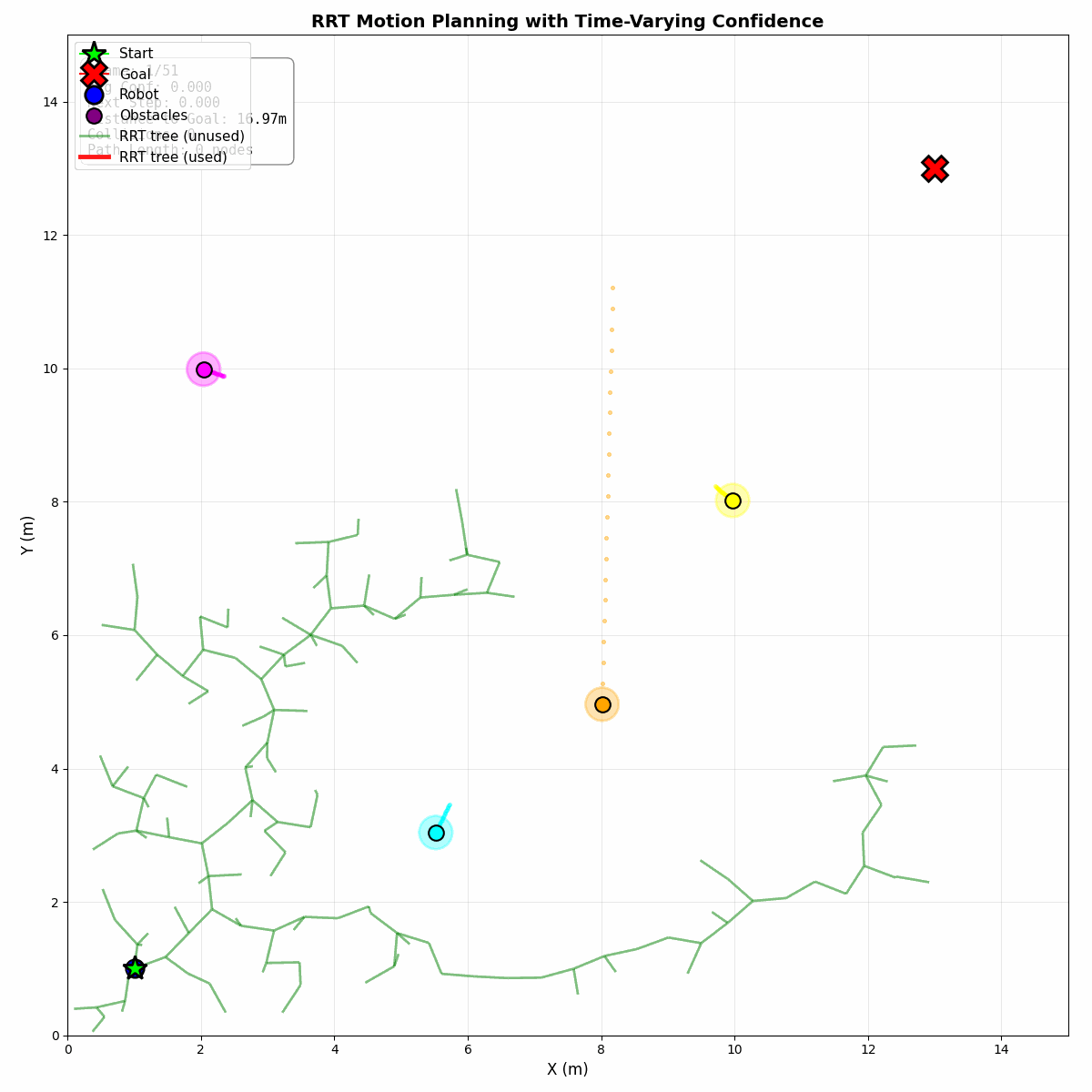Time-aware Motion Planning in Dynamic Environments with Conformal Prediction
Visual Overview


Abstract
Safe navigation in dynamic environments remains challenging due to uncertain obstacle behaviors and the lack of formal prediction guarantees. We propose two motion planning frameworks that leverage conformal prediction (CP): a global planner that integrates Safe Interval Path Planning (SIPP) for uncertainty-aware trajectory generation, and a local planner that performs online reactive planning. The global planner offers distribution-free safety guarantees for long-horizon navigation, while the local planner mitigates inaccuracies in obstacle trajectory predictions through adaptive CP, enabling robust and responsive motion in dynamic environments.
To further enhance trajectory feasibility, we introduce an adaptive quantile mechanism in the CP-based uncertainty quantification. Instead of using a fixed confidence level, the quantile is automatically tuned to the optimal value that preserves trajectory feasibility, allowing the planner to adaptively tighten safety margins in regions with higher uncertainty. We validate the proposed framework through numerical experiments conducted in dynamic and cluttered environments.
Key Contributions
- CP-SIPP Framework: We introduce a Conformal Prediction Safe Interval Path Planning framework that integrates conformal prediction for global, long-horizon navigation with formal, distribution-free safety guarantees in discrete spatial-temporal domains.
- Optimization Methods: We propose optimization methods that balance trajectory feasibility, optimal cost, and CP confidence levels.
- ACP-RRT Algorithm: We extend the conformal safety principle to continuous domains through a time-aware Adaptive Conformal Prediction RRT that performs local, reactive planning by adaptively calibrating uncertainty bounds using online sensor feedback, enabling probabilistically safe motion planning under distribution shift.
Method Overview
Our approach consists of two complementary frameworks for handling uncertainty in dynamic environments:
1. Global Planning with CP-SIPP
The CP-SIPP framework extends classical Safe Interval Path Planning by incorporating discrete confidence levels derived from conformal prediction. By compressing temporal information into safe intervals while maintaining probabilistic safety guarantees, CP-SIPP efficiently computes time-optimal trajectories in discrete spatial-temporal domains. The planner reasons about both travel time and prediction uncertainty, providing formal distribution-free safety guarantees for long-horizon navigation.
2. Local Reactive Planning with ACP-RRT
For continuous domains with online sensor feedback, we develop the Adaptive Conformal Prediction RRT algorithm. ACP-RRT performs sampling-based planning with time-varying confidence schedules that reflect increasing prediction uncertainty over longer horizons. The algorithm adaptively calibrates safety bounds in response to distribution shifts detected through real-time observations, enabling robust and responsive local navigation without requiring a pre-calibrated dataset.